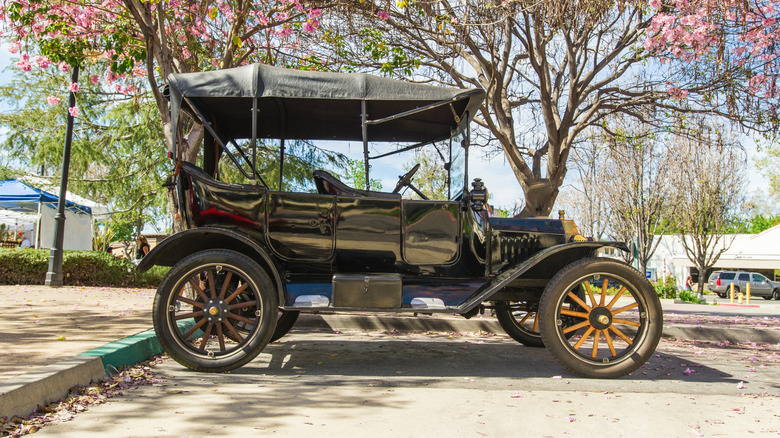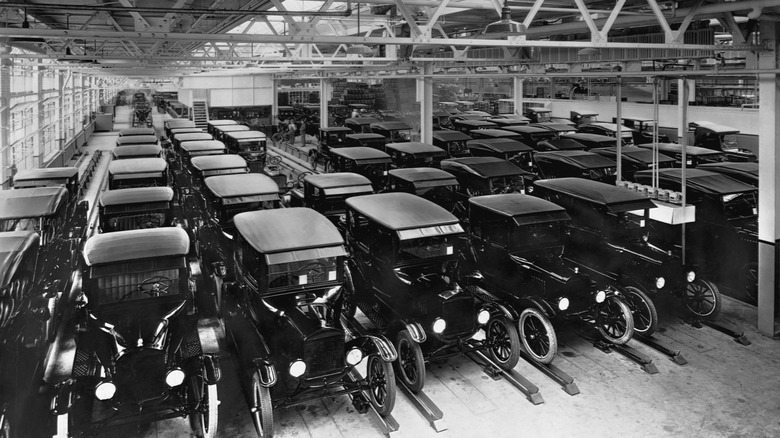Why The Ford Model T Was Only Offered In Black For More Than A Decade
Henry Ford and his Model T are as engrained into the fabric of American history as George Washington being our first President. In school, we're taught about the man and his creation, which not only put Motor City on the global map but also helped revolutionize transportation as we know it. According to Ford's 1922 autobiography ("In My Life and Work"), he said, "Any customer can have a car painted any color that he wants so long as it's black" in 1909, but between 1908 and 1913, the Tin Lizzie was available in blue, red, grey, and green. Each color designated a different body style (roadsters were gray, touring cars were red, etc.).
However, starting in 1914, every version of the Model T only came in black, a trend that continued until 1926. While many sources claim his switch to a "Japan Black" lacquer was because it dried quicker than other paints when used on metal, it was also done to speed up and streamline production. Painting cars in the early days was an arduous process because it was done by hand using brushes, a far cry from how modern automakers paint cars today. Multiple coats of primer had to be applied, and each layer had to dry before it could be sanded down to remove the brush marks. This process was repeated after each layer of color paint as well as with the final varnish coat, with some colors taking as long as eight weeks to finish. And time wasn't the only enemy.
The Model T was bathed in black
The warehouse space required to house all those parked vehicles as they were drying was immense, and it was burdensome to keep dust off each one so it wouldn't set into the paint. All that work for something (the paint) that really wasn't made to last was a hurdle Ford needed to remove. He was adamant about creating a universal car that was easy to operate, affordable to the masses, and long-lasting. In order to achieve that, he had to refine his manufacturing process to make it as efficient and streamlined as possible. Part and parcel of that process included the actual painting of each vehicle.
He found that if he painted every component on the Model T black, he wouldn't have to stop production to swap paint, which dramatically reduced manufacturing prep time. Black made fluctuations harder to see and didn't need as much quality control. It also made blemishes and scratches on the body more noticeable and thus quicker to touch up. Even after Ford began applying a more durable baked enamel, black was the only color option.
The Model T rolled out to its first customer on October 1, 1908. The world's first mass-produced car — obviously making it one of the most successful models in Ford's history — was extensively evaluated before hitting the road. Henry Ford himself even road-tested it while hunting in Wisconsin and northern Michigan. Additional testing, which conveniently acted as promotional stunts, included rolling up the stairs of the Tennessee State Capitol and winding its way to the top of the 14,000+ foot Pikes Peak (aka "America's Mountain") in Colorado.

